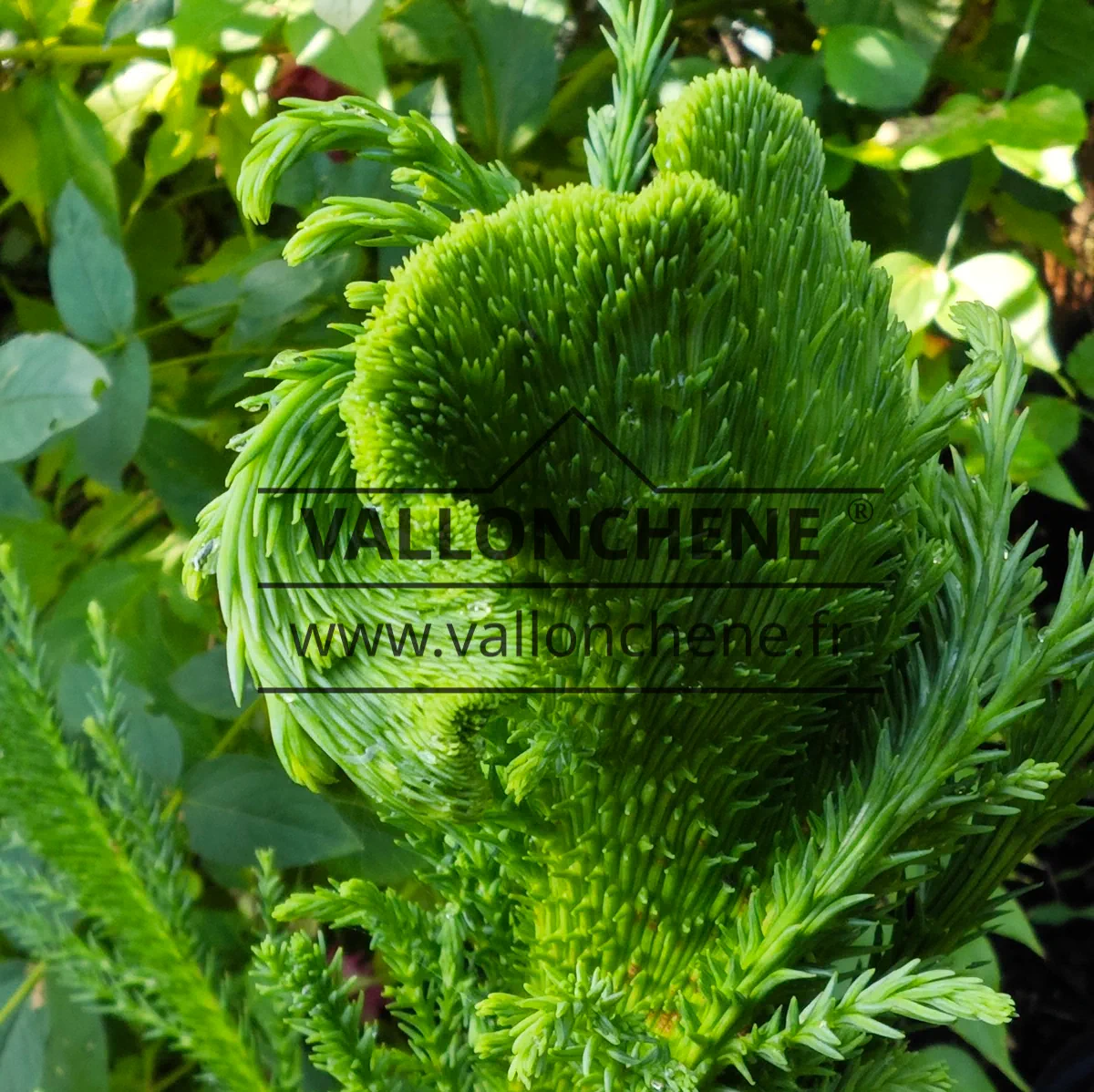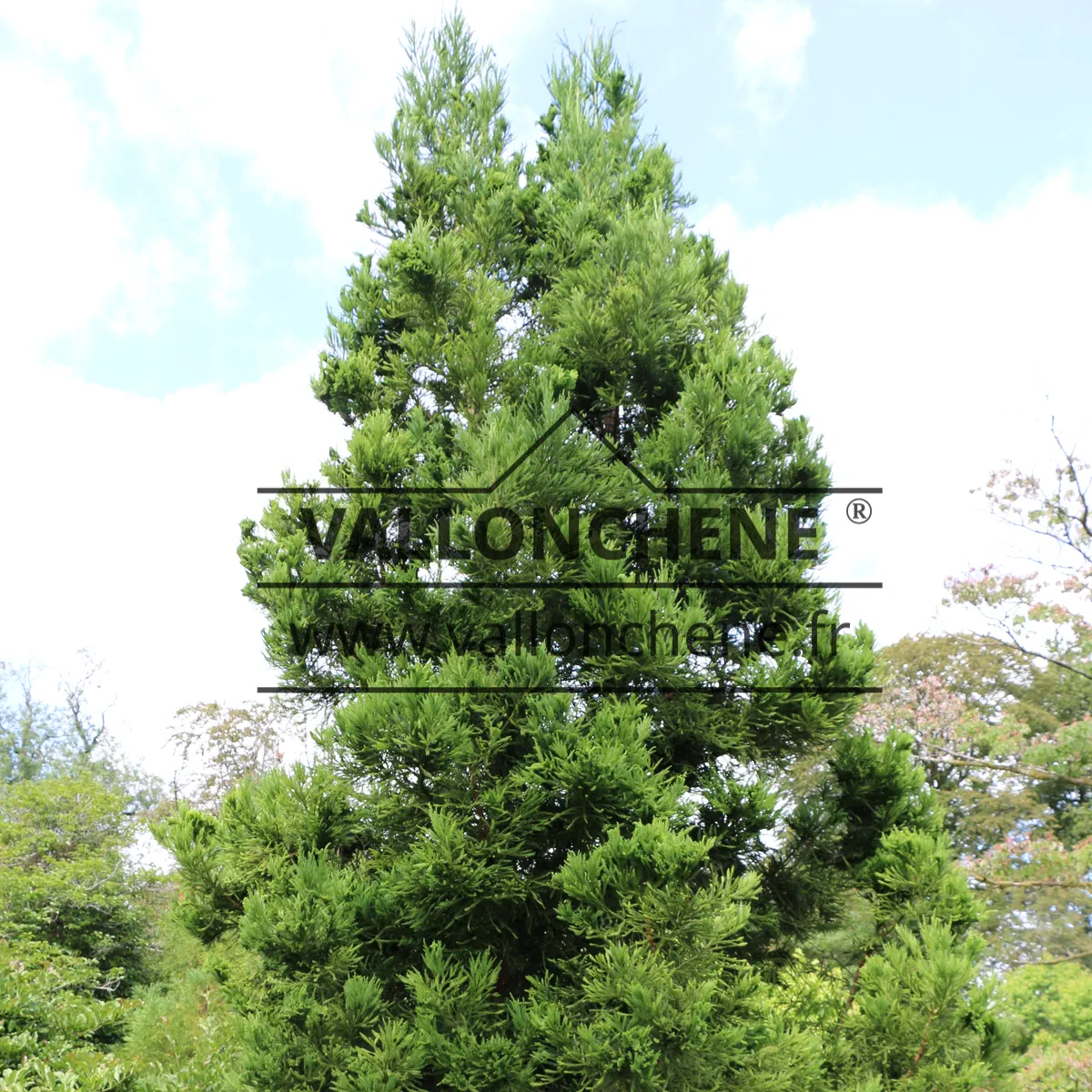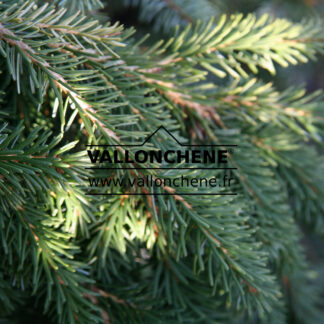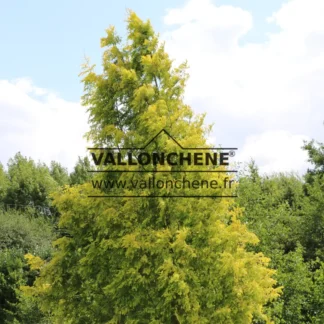Description
The Plant
The Cryptomeria japonica ‘Cristata’, also known as the Japanese cedar with cock’s comb foliage, is a conifer that never fails to surprise with its original appearance. Its irregularly fused shoots form flattened crests that indeed evoke a rooster’s comb. This botanical peculiarity makes it a unique decorative element in gardens. Moreover, this plant grows slowly and is very resistant to cold. For these reasons, even novice gardeners will appreciate it.
Planting and Care
CRYPTOMERIA japonica ‘Cristata’ prefers moist, well-drained or heavy, acidic, neutral or calcareous soils. It thrives in partial shade or full sun. Planting is preferably done in autumn or spring. For optimal pot or planting hole preparation, we have designed specific instructions available here. Once established, this tree requires little maintenance. However, we recommend mulching the base to maintain good soil moisture. Want to save water while having a beautiful garden? Check out our helpful tips!
History and Origin
Native to the mountainous regions of Japan, the CRYPTOMERIA japonica, commonly known as Japanese cedar, is a conifer that has marked the history and culture of the Archipelago. Its existence dates back millennia, and it has deeply permeated the Japanese landscape. Moreover, in its native country, this majestic tree is often planted around temples and shrines, testifying to its sacred dimension.
Moreover, the CRYPTOMERIA japonica is a symbol of longevity and immortality in Japanese culture. Its slow growth and exceptional lifespan make it a revered tree. Thus, it is associated with ancestors and the transmission of traditions. Numerous legends and popular beliefs surround this venerable tree.
Introduction to Europe and use
Introduced to Europe in the 19th century, the CRYPTOMERIA japonica quickly seduced botany enthusiasts with its elegance and hardiness. It was used for ornamental purposes in parks and gardens, but also for afforestation in certain regions.
The cultivar CRYPTOMERIA japonica ‘Cristata’ is a natural mutation that appeared within the species. It was selected for its original appearance. Although the exact origins of this mutation are unknown, it is likely that it manifested spontaneously in nature.









Reviews
There are no reviews yet.